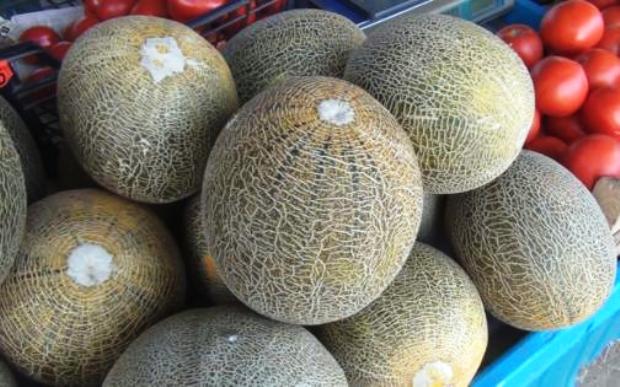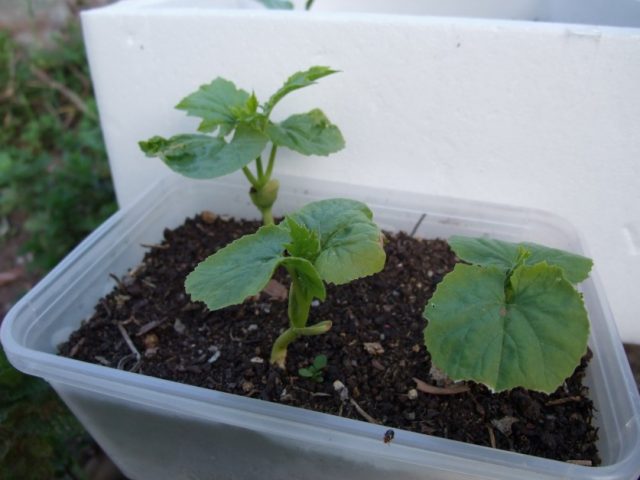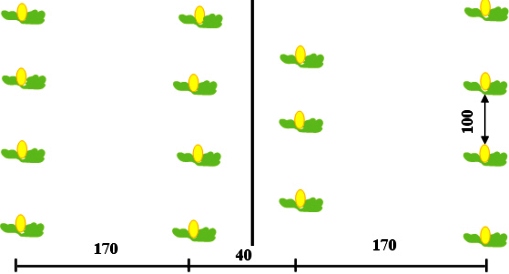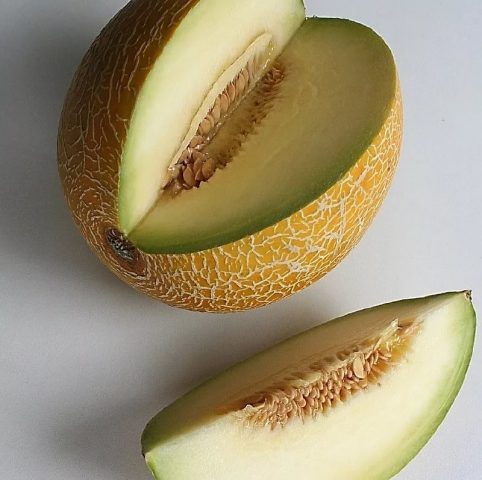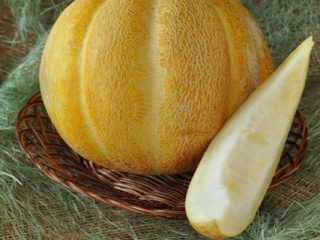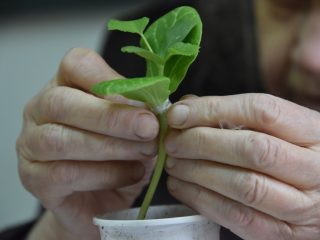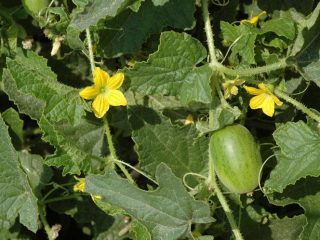Content
Melon Slavia is an unpretentious, fruitful variety with excellent taste. Drought-resistant, withstands low temperatures at night. It is popular with farmers and gardeners due to its high marketability, excellent transportability and keeping quality. Melon Slavia retains its taste and marketability for a month after harvesting from the garden.
Description of the Slavia melon variety
Melon Slavia is a climbing, late-ripening variety. The period from germination to harvesting of the first crop is 90-110 days. The length of the main whip reaches 1.5-2 m.
Leaves | Large, green, kidney-shaped |
Fruit | Yellow-green color, rounded, without a pattern, smooth, with a coarse-mesh solid mesh |
Skin | Medium thickness, white at the cut |
Pulp | White, dense, juicy |
Seeds | Oval, medium, cream color |
Fruit weight | 1.5-4.0 kg |
Yield | 18-25 t / ha |
Melon Slavia has a rich sweet taste and a fresh, pronounced melon aroma. This variety holds the record for sugar content in fruits. The sugar content is 8.8%.
Pros and cons of the variety
Advantages of Slavia melon:
- endurance;
- drought resistance;
- disease and pest resistance;
- good transportability;
- keeping quality.
Of the shortcomings of the variety, only the difficulties with cultivation can be noted. Not in every region the fruits have time to fully ripen. In cooler climatic zones, melon frostbite is possible. When grown indoors (greenhouses), the Slavia melon lacks sunlight and heat.
Melon cultivation Slavia
It is possible to grow Slavia melon both by open sowing in the ground, and by seedling.
Seedling preparation
You can speed up the harvest by growing the Slavia melon in a seedling way. Seedling preparation begins with sowing seeds. It is recommended to use separate containers - plastic cups or peat pots, pre-filled with soil mixture.
The optimum seeding time is mid-April. Sowing seeds is carried out to a depth of 2.5-3 cm, laying them on one side. The temperature required for germination is + 23 ° С, after the emergence of shoots it is reduced to + 21 ° С. It is important to provide the seedlings with good lighting for at least 12 hours a day. Seedlings are planted in open ground upon reaching the age of 25-35 days.
Selection and preparation of the landing site
Choosing the right planting site is the key to a good harvest. Melon is a thermophilic plant, therefore, seed beds should be located on the sunny side - south or southwest. The site should be quiet, protected from strong winds.
You can, for example, plant corn, sunflowers in 2 rows around the perimeter of the plot. You can also plant the melon between the rows of young orchards.
The choice of the predecessor is equally important. Best of all, the Slavia melon will grow after such crops:
- beans;
- corn;
- cabbage;
- potatoes (early);
- winter wheat;
- perennial herbs.
It is not necessary to grow the Slavia melon in one place for more than two years, as this can lead to a decrease in yield. Melon cultivation in the same garden can be resumed in 5 years.
Landing rules
Sowing melon seeds in unprotected soil is carried out at different times, depending on the growing region:
- in the forest-steppe zone - from 5 to 15 May;
- in the steppe - late April or mid-May;
- in the western regions (the most northern) - from 20 to 31 May.
Seedlings are planted a little later, when the threat of night spring frosts has passed - approximately in the month of May.
Landing scheme:
Watering and feeding
Watering is important for the melon from the moment of germination to fruit setting, since during this period its root system does not have time to deepen. Watering should be done in moderation, but regularly, and always with warm water. It is recommended to carry out about 5 waterings per week, at the rate of 45 liters per 1 m2... Watering is stopped 1 month before the first harvest of Slavia melons.
The first feeding (mullein or ammonium nitrate) is recommended 14 days after planting. The second and subsequent feeding is performed using a mixture of fertilizers. For example, such a solution (for 10 liters of water):
- superphosphate - 40 g;
- ammonium sulfate - 25-30 g;
- potassium salt - 15-20 g.
Formation
The correct formation of the Slavia melon bush and the regulation of the number of ovaries on it is the main secret of obtaining a high yield. It is necessary to resort to this technique in order to reduce the ripening time and get large fruits. Formation time depends on growing conditions and climate. This operation is carried out depending on the phase of plant development.
The female flowers of the Slavia melon are formed mainly on the lateral shoots, therefore, the formation of the bush begins with pinching the main stem. The top of the shoot is broken off after 3-4 leaves, thereby removing the growth point. After that, lateral processes begin to grow from the leaf sinuses - shoots of the second order. Good fruiting is ensured by leaving 2-3 shoots and no more than 6 fruits on one bush. You should focus on the strength of the plant's growth.
When the Slavia melon ripens
Melon Slavia is a late-ripening variety that has a long harvest formation period (90-110 days). The first fruits begin to ripen in August, but sometimes the harvest has to wait until September. These terms depend on many factors. And from the climatic zone in which Slavia is grown, and from caring for it, and, in particular, on how high-quality and complete it was.
Harvesting
Harvesting begins when the fruit is fully ripe. You can remove the first fruits already 2-2.5 months after planting and until early October.
You can determine the ripeness of the Slavia melon by the following parameters:
- Aroma. In ripe fruits, it is bright - honey, vanilla or pear. Overripe smells not very pleasant. Greens either do not exude aroma at all, or it is slightly perceptible.
- Sound. When tapping on the sides of a ripe melon, a dull sound will be heard, in unripe fruits it will be sonorous.
- Color. Fruit color should be uniform - yellow-green. The network of cracks should be moderately pronounced, covering about ½ of the fruit.
When harvesting, ripe Slavia melons are separated from the lashes, leaving a stalk about 5 cm long. Sorted by size and ripeness, removing damaged fruits. For gradual and uniform ripening, melons are stored in groups of uniform ripeness. From 1 hectare of planting area, you can collect 18-25 tons of marketable fruits.
Diseases and pests
Melon Slavia practically does not get sick and is not damaged by pests. In particular, it is resistant to powdery mildew, downy mildew and aphids. But sometimes Slavia can be affected by some diseases characteristic of other melons and gourds.
Diseases | Control methods |
Downy mildew | Bordeaux mixture and urea solution |
Root rot | Disinfection of seeds in formalin |
Anthracnose | Sulfur solution and Bordeaux liquid |
Fusarium | Phosphate or potassium preparations |
Conclusion
Melon Slavia is a rather unpretentious variety that even a novice gardener can grow. If you follow all the recommendations for growing and care, you can get a good harvest. Due to the fact that the fruits remain fresh and juicy for a long time, and are also well transported, the Slavia melon can be grown not only for one's own needs, but also for sale.
